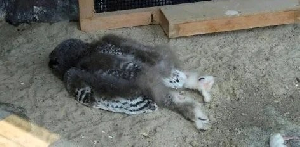The only domestic animal that dies a very painful death if not mated
If they’re well cared for, ferrets typically live for around 6 years but can live up to 10 years.
Domesticated ferrets most likely descend from the European polecat. Ferrets have domesticated about 2,500 years ago. Historically, ferrets were used to hunt rabbits and rodents.
Their lean bodies and curious nature make ferrets natural at getting down holes to chase rodents and rabbits out of burrows.
Both male and female ferrets that are ready to breed develop a pungent smell and also have extremely greasy skin. A jill in heat will have a swollen and enlarged vulva that is very noticeable.
You may also notice a pink and watery secretion coming from her vaginal area. Males have been known to drag females around and bite them enough to cause bleeding, all during the mating process.
They can also be violent toward other males and humans during this time, making them less than the ideal pet when they come into heat.
All ferrets should be fixed before they reach sexual maturity as this will drastically reduce their odour and it will extend their lives.
If a female ferret is not mated or spayed it can develop anaemia, which can be fatal. This is because when a female is in heat the body produces oestrogen; this reduces the production of red blood cells leading to anaemia.
Neutering can also reduce the pungent odour that ferrets emit.
Ferret oocytes ovulate at the metaphase of the second meiotic division (MII) embedded in three layers of corona radiata cells.
Embryos enter the uterus over several days starting on day 5 after mating. Between days 12 and 13 after mating, the embryos have become implanted in the endometrium.
Baby ferrets, or kits, will nurse from their mother for approximately six weeks, but they can be offered small amounts of food soaked until soft with warm water or broth from three weeks old.
 Home Of Ghana News Ghana News, Entertainment And More
Home Of Ghana News Ghana News, Entertainment And More





